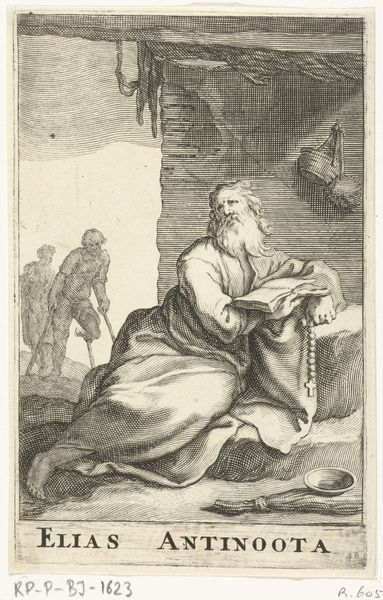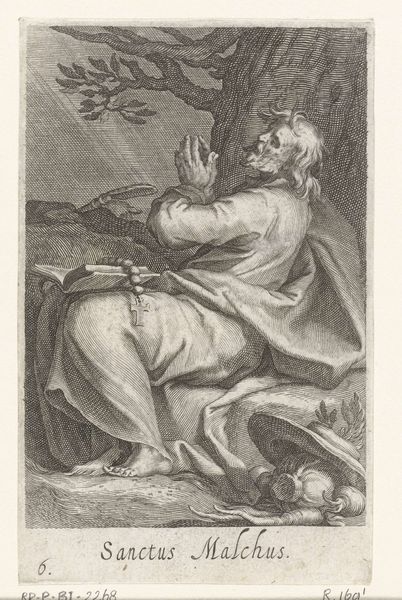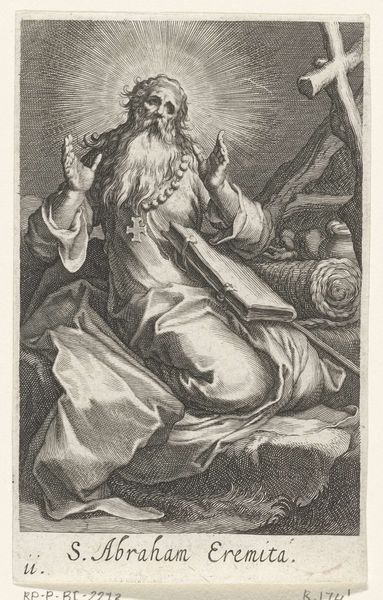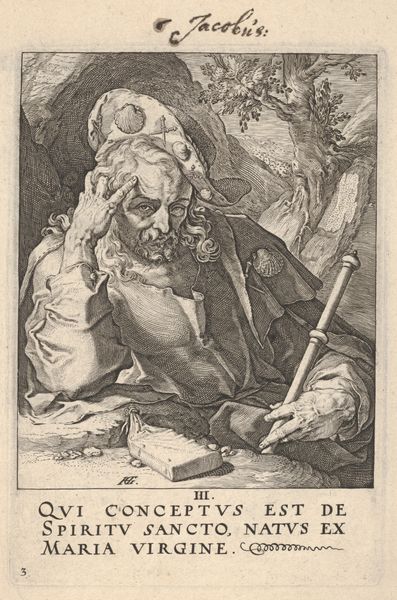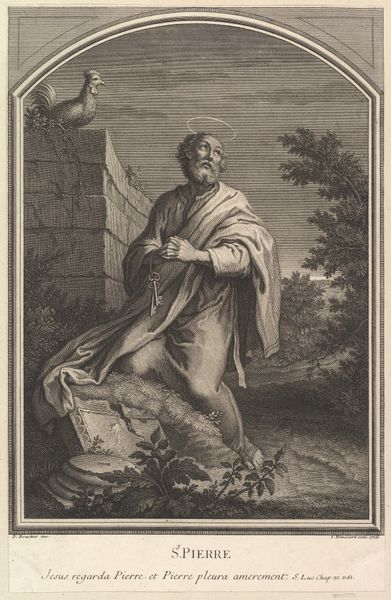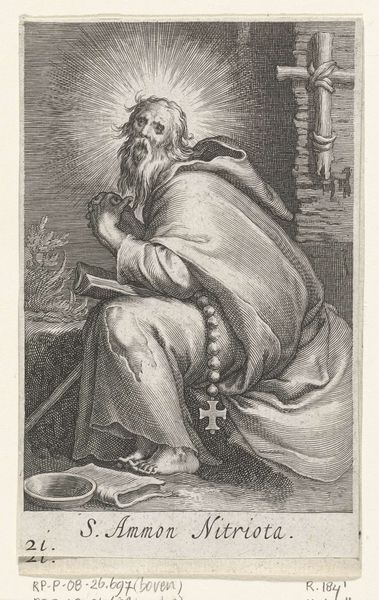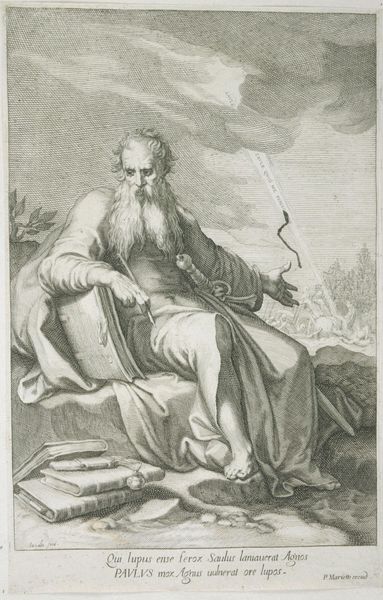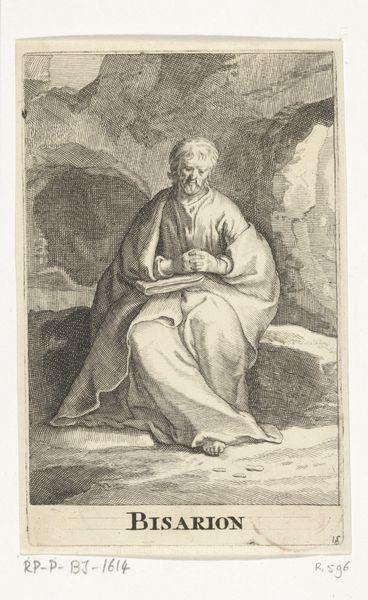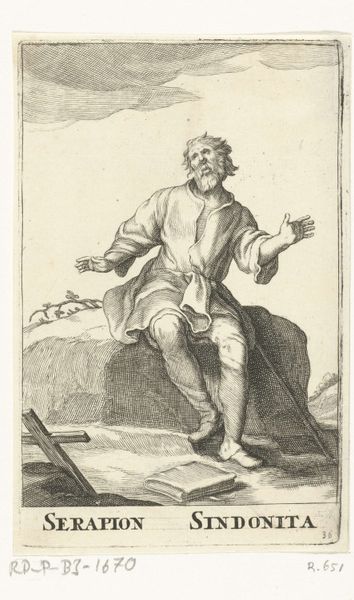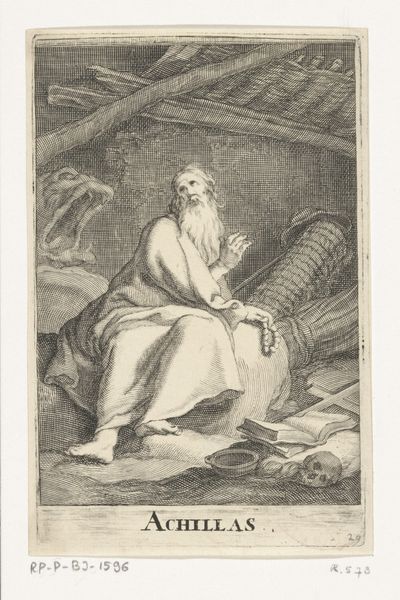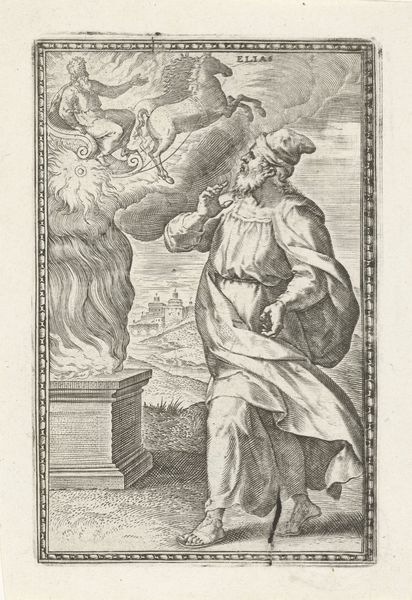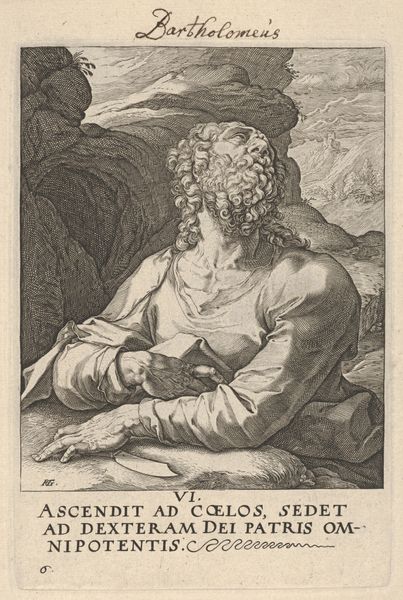
engraving
#
baroque
#
history-painting
#
engraving
Dimensions: height 135 mm, width 85 mm
Copyright: Rijks Museum: Open Domain
Curator: This engraving, residing here at the Rijksmuseum, is titled "Heilige Piammon Diolcus" and comes to us from after 1636, by Frederick Bloemaert. What are your initial thoughts? Editor: Stark. The setting, a rough landscape with only sparse detailing, feels almost oppressive, yet the figure of Piammon seems serene. What can you tell me about him? Curator: Piammon was an early Christian ascetic in Egypt; later accounts portray him as living to be almost 100 years old. Bloemaert was part of a wave of 17th-century artists fascinated by representing these early desert fathers and their spiritual journeys. The engraving itself speaks to a specific historical and religious context. These images, including this very print, served as exemplars of piety but were also deeply embedded within the visual culture of the era. Editor: And that visual culture is rich with symbols. Notice the crucifix he’s holding—not the crucified Christ, but just the cross itself, an instrument transformed into a symbol of faith and hope. Then you see his gesture, a blend of supplication and acceptance. The stark background then creates an immediate sensation of the man as one within a sparse realm that mirrors the sacrifices required of the soul for spiritual clarity. Curator: It’s intriguing how Bloemaert emphasizes Piammon’s personal devotion against this backdrop of historical narrative. Consider the dissemination of this image – it’s reproducible, meaning the concepts associated with Piammon became accessible beyond a church setting. Editor: Yes, the act of distributing Piammon's imagery created access to not only historical knowledge of the saint, but access to his iconographical significance as well. By disseminating an image of Saint Piammon at the moment of the peak of spiritual reflection and religious discipline, a message of morality can also be reproduced and further disseminated alongside it. The printing of Piammon allows for accessibility that may create more Piammons throughout Europe. Curator: A sentiment aligned with the religious environment of the time, wouldn’t you say? To revisit "Heilige Piammon Diolcus" provokes reflections regarding the nature of art as historical evidence and mirrors the intersection of the artist and political forces within 17th century Baroque imagery. Editor: Indeed. In the end, the image serves not just as a record but as a reflection—of personal piety, cultural values, and the power of visual language.
Comments
No comments
Be the first to comment and join the conversation on the ultimate creative platform.
